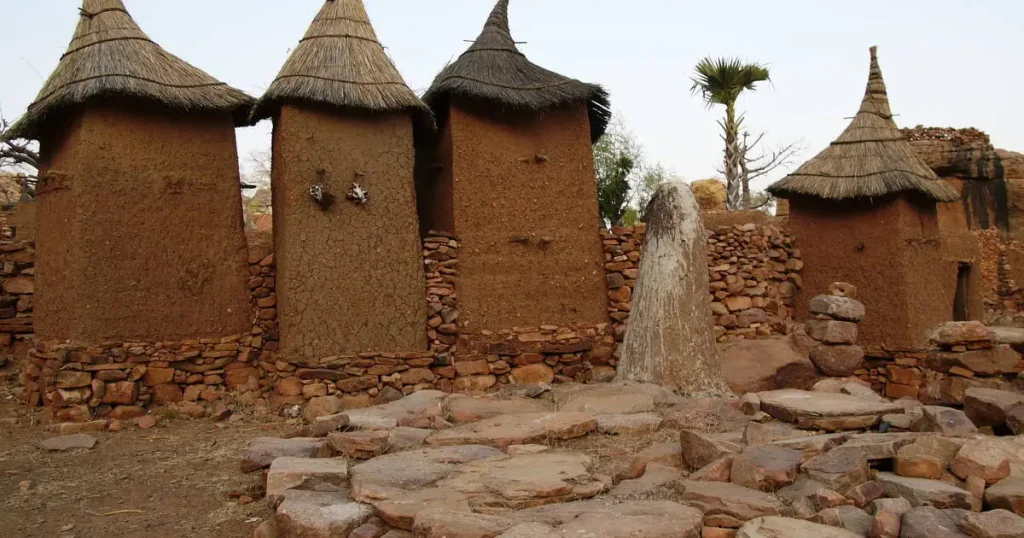On August 3, 2020, UNESCO announced a $1 million project, funded by the International Alliance for the Protection of Heritage in Conflict Areas (ALIPH), to rehabilitate the Cliff of Bandiagara World Heritage site in Mali’s Mopti region, per UNESCO records. The three-year initiative aims to restore damaged cultural heritage and foster social cohesion among 289 villages across 400,000 hectares, ravaged by conflict since 2012.
Restoring Cultural Heritage
The project targets the repair of traditional housing, granaries, and cultural sites in the Dogon, Peul, Bozo, Bambara, and Sonrhai communities, per UN data. It will safeguard ceremonial objects in a memorial collection and revive cultural practices like masked dances, Yaaral, and Degal festivities, disrupted by violence. Income-generating activities for women will promote reconciliation, addressing intercommunal strife amid the COVID-19 pandemic, which strained Mali’s health system, per WHO.
Conflict’s Toll on Bandiagara
Since 2012, armed groups, including jihadists, destroyed or damaged 30 villages in Bandiagara, half within the World Heritage site, per UNOCHA. The crisis, claiming thousands of lives and displacing 208,000 people by 2020, eroded cultural practices and fueled tensions, similar to regional violence like Cameroon’s Boko Haram attack, per a previous artifact. UNESCO’s prior interventions since 2012, including 2019 mediation efforts, inform this project.
Collaborative Effort
UNESCO experts will partner with Mali’s Ministry of Culture, National Direction of Cultural Heritage (DNPC), Cultural Mission of Bandiagara (BCM), and MINUSMA, engaging local communities, per UN records. “Culture is a source of resilience and peacebuilding,” said UNESCO Director-General Audrey Azoulay, emphasizing its role in recovery. ALIPH Chairman Thomas Kaplan noted the project’s aim to protect endangered heritage, building on ALIPH’s 2017 founding to counter Mali’s cultural destruction.
Bandiagara’s Significance
Inscribed as a UNESCO World Heritage site in 1989, the Cliff of Bandiagara spans a sandstone plateau, escarpment, and plains, hosting sacred rituals tied to the Dogon’s environment, per UNESCO’s World Heritage Centre. The region’s 400,000-hectare landscape, blending cultural and natural elements, faces threats from conflict and climate change, with 70% of Mali’s 20 million population affected by insecurity, per World Bank data.
Regional and Global Context
Mali’s crisis mirrors regional challenges, like Gambia’s COVID-19 response, per a previous artifact, where strained healthcare systems exacerbate crises. The project aligns with UNESCO’s global efforts to protect heritage in conflict zones, such as Syria, per ICOMOS. By fostering income for women and cultural restoration, it counters the economic fallout of COVID-19, which reduced Mali’s GDP growth to 1.2% in 2020, per African Development Bank.
Path Forward
The initiative seeks to rebuild social fabric and promote peace, leveraging Bandiagara’s heritage to unite communities. With 1.3 million displaced in the Sahel by 2020, per UNHCR, sustained international support and local engagement are vital to ensure the project’s success and Mali’s cultural resilience.






